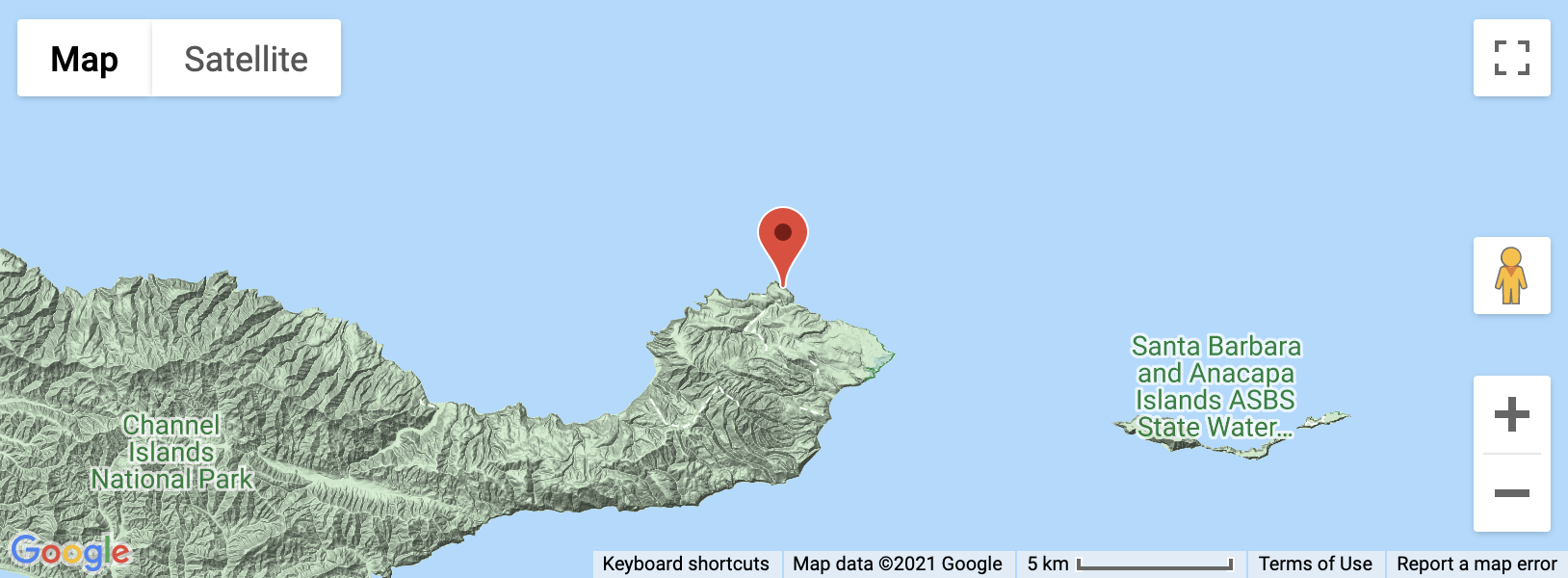At the top of the cliffs overlooking Scorpion Harbor, a distinctly out-of-place deposit of chert lies spread out around a mound of small boulders. While the boulders of the mound were certainly of the same geologic origin as the surrounding landscape, the chert was not.
Chert forms when siliceous sandstone dissolves and recrystallizes. The bedrock of the area where these photos were taken is not siliceous. The nearest deposit of sandstone that could possibly have been the origin of the chert is nearly a half mile away on the trail leading up to the cliffs.
So we wondered, "how did it get here? " We knew that chert was used by many native peoples for tools and weapons, so it was not hard to imagine that this might have been a tool-making site.
Amidst the chips and flakes of chert we found several pieces that appeared to have been manipulated by human intent, and one large piece that seemed particularly modified. When shown the picture of the chert flake below, Brian Barbier, a student of anthropology and expert in Native American tool-making processes, agreed with our guess that we had found a tool-making site:

"The repetitive edge flaking at the top, the hatchure lines on the large face (radiating fissure lines that point to the place of impact when that flake removal occured), and the bulb of percussion are the characteristics I am seeing in this view... I would bet it is an artifact. Especially since the Chumash used a ton of chert. If it's not down in an alluvial/colluvial deposit, then it's much more likely human transported, and thus, those probably are worked flake removals."
But if this was true, and the Chumash had been bringing their chert from other places to this one in order to work the stone into tools, why carry it so far to this particular place? Our guess is that the location provided another function. If a young Chumash were going to be sitting in one place for a long time, learning to knap chert and making tools, then he or she might as well be serving as a lookout as well. The cliff-top location of this workshop provides an ideal lookout position from which one can see for miles around the area of Scorpion Harbor, one of the few convenient places to land on the eastern end of the island. The mound of local rocks in the middle might have been a workstation, or a firepit for keeping warm. It is hard to say for sure if our conjecture is correct, but it is certainly plausible.
There is a profound feeling of connectedness when looking out over the sea in this place. Imagine the native person who might have stood here last and all the ancestors who might have stood there for 1000's of years before, working their tools, watching for returning fishermen or tradesmen from the mainland, and seeing the same untamed cliffs and waves.

